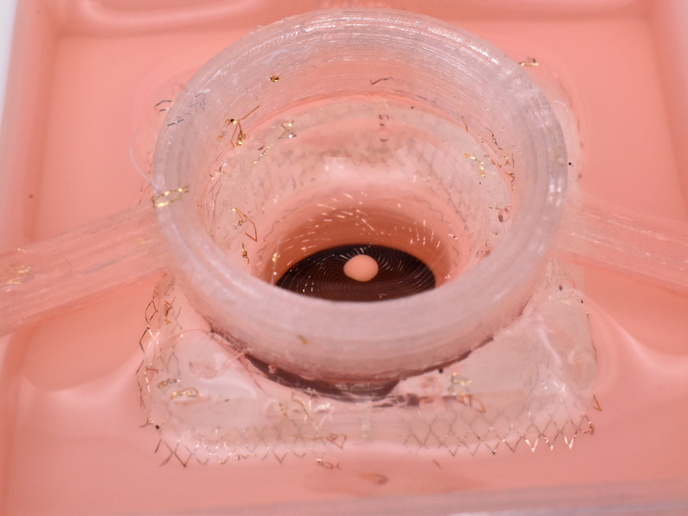Kirigami-inspired breakthrough for neuroscience
The development of organoids derived from induced pluripotent stem cells(opens in new window) has revolutionised neuroscience research, offering a glimpse into the intricate cellular organisation of the human brain. These miniature replicas of human organs, ranging from mini brains to sensory ganglia, simulate the structural complexities and genetic predispositions of human organs. Many neuropsychiatric disorders suffer from abnormal electrical activity of the neurons making up the brain tissue. Electrical activity measurements, even from the early stages of organoid development, can provide important insight into such diseases. However, studying their electrical activity without disrupting their 3D structure has posed a significant challenge.
Mesh-electrode arrays for electrical activity measurements
Undertaken with the support of the Marie Skłodowska-Curie Actions(opens in new window) (MSCA) programme, the STRELECOID project has drawn inspiration from the art of Kirigami(opens in new window) to develop a groundbreaking innovation enabling continuous, non-invasive electrical recording while organoids grow freely around them. The outgoing phase of the project was carried out at Stanford University. “The central innovation of the project was the ability to take a material that's very hard and make it flexible and conformable; similarly, in Kirigami paper-cutting art, careful geometric cutting can make hard materials flexible,” explains the MSCA research fellow Csaba Forró. Conventional electrode arrays at planar interfaces induce cellular stress and risk damaging the organoid structure, hindering long-term studies and accurate data collection. The STRELECOID technology resembles a fishnet of low footprint and exceptional flexibility that unfolds into a basket where the organoid is placed. The organoid continues to grow seamlessly, integrating the mesh-electrode array within its structure which also provides structural support. Microelectrodes with a diameter of around 25 micrometres are dispersed throughout the design. These become gradually embedded within the organoid core and allow the recording of electrical activity from a multitude of regions. This approach circumvents the insertion of an electrical measuring device and also avoids potential inflammation in the organoid.
Advanced design and compatibility
By leveraging Python-based design frameworks and physical simulations, these arrays undergo meticulous testing prior to production, ensuring compatibility with diverse organoid types and prolonged stability. Results so far indicate that the STRELECOID mesh-electrode array can perform continuous electrical recording of organoid activity for more than half a year without disruption. “This is done without disturbing or stressing the organoid, as the entire process is done while the organoid is in suspension,” emphasises Forró. The STRELECOID setup is compatible with common neuroscience techniques such as optogenetic and pharmacology interventions. Innovative algorithms enable real-time detection of neural activity within recordings, significantly compressing data while maintaining essential information.
Paradigm shift in neural interface technology
Having demonstrated the success of this approach, the journey towards optimising these mesh-electrode arrays continues, with ongoing efforts to refine their mechanical resilience and electrode performance. Moreover, the team hopes to accommodate other types of organoids including cardiac ones. Currently, organoids suffer from a lack of vascularisation, which results in hypoxia within their core due to low oxygen diffusion. Mesh-electrode arrays could address this limitation by incorporating a microfluidic network that could deliver essential molecules. Looking ahead, Forró highlights: “Our innovation represents a paradigm shift in neural interface technology, propelling the field forward and unlocking new frontiers in understanding neurological disorders.”







